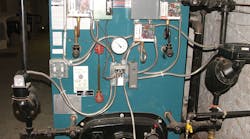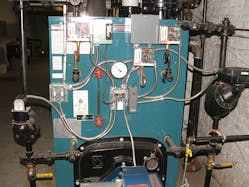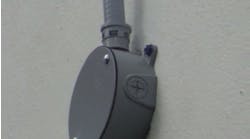All references are based on the 2014 edition of the NEC.
Imagine if you were called to troubleshoot this oil-fired heating system and found there were no lights installed in this utility room. It would be very difficult to do, and could even be downright dangerous. Yet, this installation could be Code-compliant if this appliance was installed in a commercial building or some other non-dwelling occupancy. How can this be?
Well, if we first look at the rules for dwelling units in Sec. 210.70(A)(3), it seems as though lighting would be required for this equipment, since it would most likely be installed in a basement or a utility room. Similar equipment installed in an attic or an underfloor space would also require lighting to be provided for servicing the equipment. However, once we install this same piece of equipment in an occupancy other than a dwelling unit, the rules change — and not necessarily for the better.
Section 210.70(A)(3) only applies to dwelling units. It doesn’t apply to a store, print shop, bank, bakery, or any other occupancy that is not a dwelling unit. For other occupancies, we must follow the minimum rules in Sec. 210.70(C). Unfortunately, when we read the rules in 210.70(C), we learn that the only two places that would require lighting for this type of equipment would be if it were installed in an attic or an underfloor space. Literally, zero lighting is required by the Code for servicing this oil burner if it is installed in a basement or the utility room of a building that is not a dwelling unit.
Is this a good idea? I don’t think so. I also don’t think it’s the intent of the Code to specifically exclude lighting for equipment in these non-dwelling locations. We must remember that the Code is a minimum standard. Working on equipment without good lighting could be dangerous.
Fortunately, this “loophole” gets closed up in the 2017 NEC. A new rule in Sec. 210.70(C) will follow the same requirements that we currently find in Sec. 210.70(A)(3).
This is another reminder to always use good judgment and logic when applying Code rules because the literal wording in the NEC doesn’t always match the intended meaning of the rule — despite the best efforts of everyone involved in the Code-making process.





